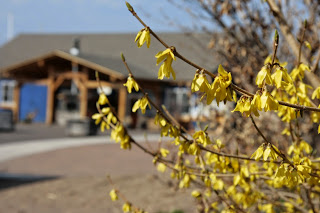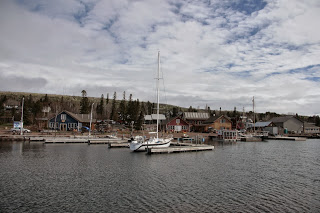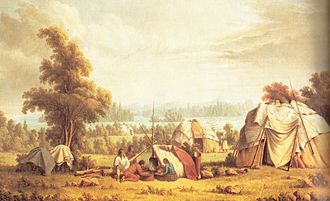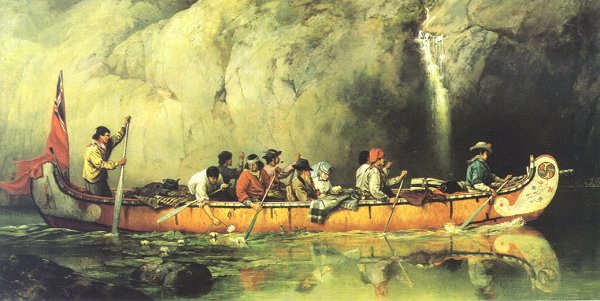
Grand Marais History - The First

Being in Northern Minnesota, I can't start my blog post without a little review of the current weather.
There is much reason for celebration up here on the North Shore. Since my last posting, I have seen robins, heard loons, smelled the fresh scent of rain and wet soil, and felt a breeze warm enough to melt the deepest snow piles and lift the corners of my mouth into a smile. And in another definite sign of no-going-back-now, the marina and harbor are gradually filling with boats big and small.
For this week's post, I thought it would be interesting to look back at the history of this place.
I think context is important to understanding our place in this world. What brings people here? Why is North House here? What connections does North House have to the history of this place?
Here's a place to start: what is Grand Marais? It is a worthwhile question to consider, albeit a strange one. Grand Marais is a town in northern Minnesota, but it is so much more than that. Grand Marais, just like any place, is a complex and constantly changing compilation of the resources that exist and have existed here - natural resources, people, climate. I believe a town is unique because of its place and its people.
I decided to visit the epicenter of local history - the Cook County Historical Society. They have so much interesting information there that I am splitting this story up into two blog posts, to make it more manageable...and because I think Hollywood must be onto something with those suspense-filled sequels.
In this first post, I will briefly cover the pre-1850 history of the Grand Marais region.
Our history of "here" begins with nomadic hunter-gatherers who found their way to this part of the North Shore thousands of years ago. One local piece of evidence of this is a 7000-year-old stone spearpoint discovered on a beach near Grand Marais (by a 3 year old...on his birthday...what a birthday gift!).
An Ojibwe village from the mid 1800s.
The aboriginal people living on the north shore likely moved throughout the year, following seasonal harvests. They settled down here on the big lake (that is what locals call Lake Superior) during the summer and fished the rich waters; they harvested wild rice on inland lakes and rivers in the fall; they probably lived inland in lake country during the winter, hunting and trapping for furs and food; and in the spring they did what many still do today on the north shore - they tapped maple trees for sugar.
The fur trade was the first big change that came to native life here. French explorers and traders discovered a route that connected a vast network of inland waterways throughout Minnesota and Canada with the Great Lakes and the world. The key section of this route was a 9 mile stretch of land that was walked before reaching the "water highway" that today is the Minnesota-Canada border. This "big portage", or "Grand Portage" was the trail where all the canoes, furs and other goods were carried for an enormous, booming industry. A fort was established where the trail left the shores of Lake Superior, and this became one of Britain's four main fur trading posts - Minnesota's first town and one of North America's greatest hubs of activity. This is present day Grand Portage, 35 miles northeast of Grand Marais. Later, in the 19th century, Grand Marais itself served as a small fur trading post.
An example of the large voyageur birch bark canoes used by fur traders.
The European traders relied heavily on the local native people (mostly Ojibwe, some Cree) to survive in this land. They employed native technologies to travel through the northern forests, such as dogsleds, snowshoes, and, most importantly, birch bark canoes, which are lightweight to carry while sturdy and waterproof.
The fur trade defined the North Shore until the early 1800s. Eventually, the demand for beaver hats in England diminished (as did the beaver populations) and the fur trade here on the north shore of Superior dwindled.
In 1854, the local Ojibwe ceded their lands to America. This is the land that today makes up Minnesota's arrowhead region. European settlers were free to settle these rocky, wooded hills and lakes. However, the first attempts at living here didn't go as planned. Did they make it? You'll have to tune in next week to find out!
(Spoiler alert: Somebody just walked in the office, so SOMEONE made it...)
Next week: life around Grand Marais since the 1850's, and some thoughts about where North House and our mission fit with the history of this place.


